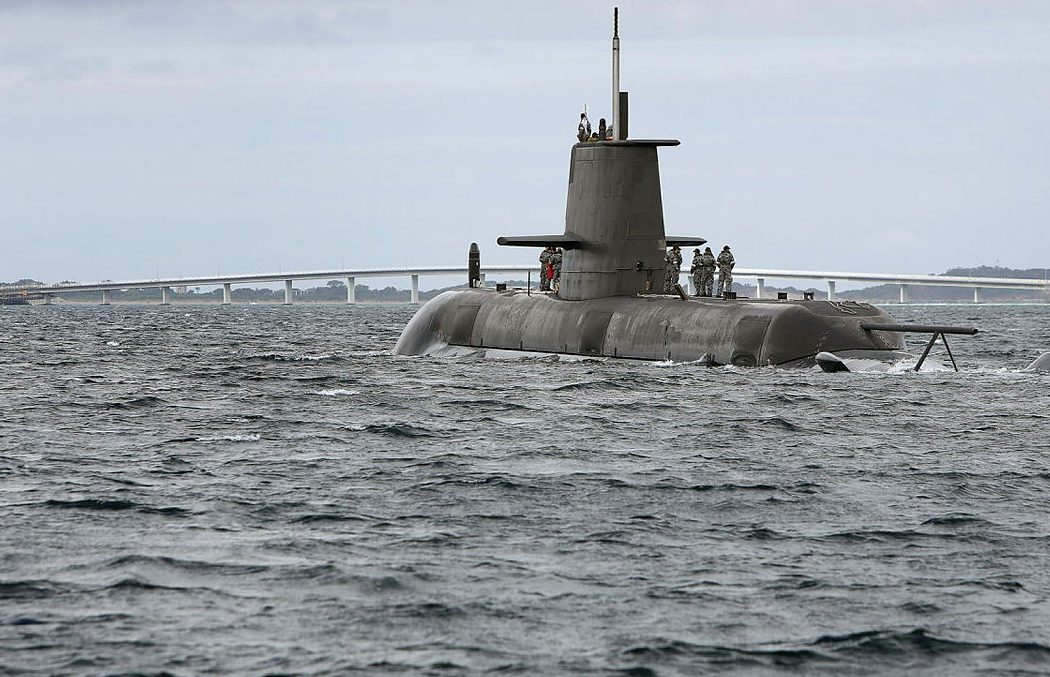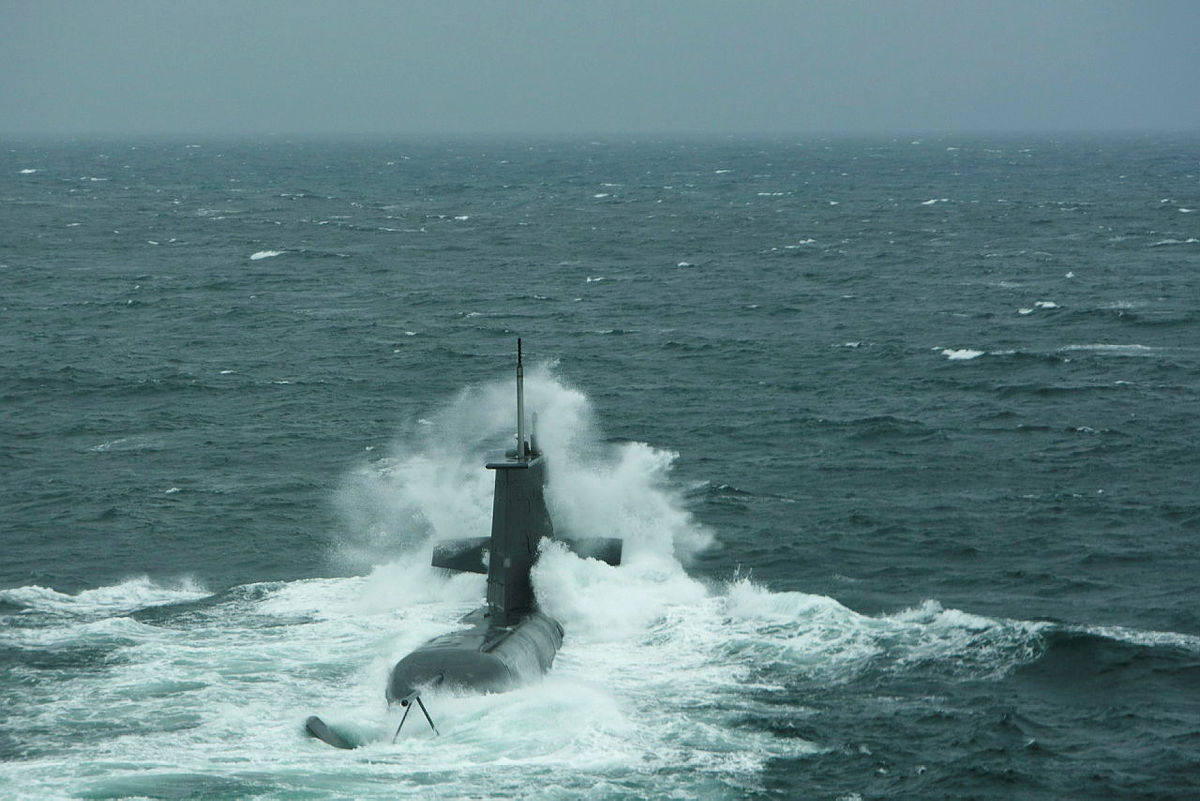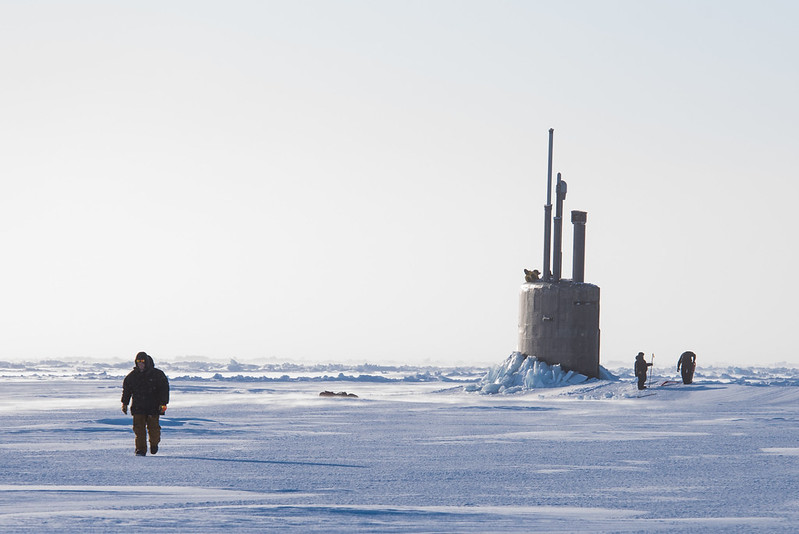Australia’s plan for acquiring nuclear-powered submarines is on track

Since the announcement in September 2021 that Australia intended to acquire nuclear-powered submarines in partnership with Britain and the United States, the plan has received significant media attention, scepticism and criticism.
There are four major risks to the AUKUS national enterprise: the political will of all partners; delivery schedule; the cost of acquiring and sustaining the capability (including its impact on Australia’s broader Defence budget); and workforce challenges, both for uniformed personnel and within the submarine-building industry.
While these risks remain significant, the progress so far demonstrates a commitment to proactive mitigation. On the political front, the partnership demands considerable backing from Britain, the US and Australia amid global upheaval.
Yet despite changes in government across all three nations since AUKUS was first announced, the initiative has retained bipartisan support, a point reinforced by the US Congress supporting it through the passing of the National Defence Authorisation Act in December 2023, including the sale of three Virginia-class submarines to Australia.
The political will was further reinforced by the agreement of all three partners on the optimal pathway for Australia’s acquisition of nuclear-powered submarines within 18 months of its announcement and the signing of the trilateral AUKUS treaty in August last year, which came into effect in January.
Although the treaty was finalised before US President Donald Trump’s election, the new US administration has since shown strong support, with Secretary of State Marco Rubio calling AUKUS ‘something that I think you’re going to find very strong support for in this administration’ and a ‘blueprint’ for co-operation.
The new US secretary of defense stated in February that ‘the president is very aware, supportive of AUKUS, recognises the importance of the defence industrial base’.
Regarding the cost risk, while it is undeniably substantial, it is not orders of magnitude higher than the ill-fated conventional Attack-class submarine project. Senate estimates from October 2021 put that project’s acquisition and sustainment costs at almost $235 billion through to 2080.
In last year’s budget, the Australian government included money in the Defence allocation to cover the expected costs of acquiring nuclear-powered submarines over the next decade. While the overall defence budget remains a significant concern, this measure has been an important step in mitigating the cost risks of AUKUS.
Australia has been steadily increasing nuclear-submariner training in the US and Britain, and since mid-2024, shipbuilders from South Australia and Western Australia have been training on nuclear-powered submarines in Hawaii.
Whether these measures will prove sufficient remains to be seen, but it is a promising start.
Schedule risks remain a key concern, particularly for the phase two sale of three Virginia-class submarines set to begin in 2032. The Collins-class vessels are already beyond their intended service life, meaning the entire plan hinges on the Virginias arriving on time—or at least only slightly delayed.
The 2023 National Defence Authorisation Act, which lies at the heart of Malcolm Turnbull’s concerns, mandates that in 2031—270 days before the sale of the first Virginia-class submarine—the US president certifies that certain conditions are met. Notably, the transfer of the submarines will not degrade US undersea capabilities.
As Turnbull correctly notes, the US submarine industrial base is already struggling to meet its planned production rate of two Virginia-class submarines per year and is unlikely to reach its goal of 66 attack submarines by 2054.
However, this does not mean that the US president in 2031 would seek to undermine Australia’s submarine program by refusing to sell three submarines. Undersea warfare effectiveness hinges on more than raw submarine numbers; it depends on having the right submarines in the right place at the right time.
This is where access to Australia’s western naval base, HMAS Stirling—and the maintenance facilities it will provide for US nuclear submarines—becomes crucial. It will help ensure US submarines can be deployed effectively when and where they are needed.
Australia’s broader contributions, including the continued support of the Harold E. Holt Communications Station north of Exmouth, further bolster US undersea warfare capabilities by facilitating secure communications with nuclear-powered submarines in the region.
It is imperative for Australia to make clear to the US just how vital submarines are to our national security, and to emphasise that the extensive support we provide, including access to Australia’s strategically important geography, is part of the deal. This is especially important given the more transactional nature of the current US administration and alliance framework.
In response to Turnbull’s call for an ‘urgent assessment’, the answer is that Australia’s plan to acquire nuclear-powered submarines remains on track.
Yes, it carries significant risks—as any major national endeavour does—but the challenges have been identified, and mitigation measures are in place. The progress made over the last three and a half years is substantial. Rather than repeatedly reassessing the program, we should concentrate our political and intellectual capital on ensuring it stays the course.






